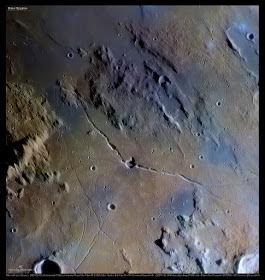New
research shows that high levels of antihistamine drugs can reduce fitness gains
For some, the word “histamine” might
evoke thoughts of seasonal allergies: runny noses, scratchy throats and itchy
eyes. But the molecule also influences exercise performance.
A new study from the University of
Oregon underscores its beneficial role in aerobic activity and exercise
recovery, showing that blocking histamine at high levels interferes with
fitness gains. It remains to be seen if lower-dose, over-the-counter antihistamine
drugs have the same effect.
The study was published May 30 in
the Journal of Applied
Physiology.
Histamine is a small signaling molecule
that evolved long ago. It is found in many plants and animals, including
single-celled organisms, which use it to signal and adapt to stress.
“In exercise, it actually seems to be
playing a very similar role of facilitating our adaptation to stress,” said
John Halliwill, a professor of human physiology at the University of Oregon and
an author on the study.
In humans, histamine is part of the
immune system; it passes along the message that inflammation is needed
somewhere. During allergy season, for example, pollen triggers the release of
histamine from mast cells, an immune system component.
Then, an inflammatory response floods
the area to try and get rid of the pollen, causing typical seasonal allergy
symptoms. That’s why drugs known as antihistamines, such as Claritin and
Zyrtec, are used to treat seasonal allergies.
Inflammation also is linked to fitness
improvements because muscles are microscopically damaged during exercise and
need to be repaired, which also builds new muscle tissue. Halliwill and
colleagues found that when histamine is blocked, aerobic fitness improvements
were slashed in half.
The team compared the improvements in a
group of 16 men and women participating in a six-week biking regimen.
Participants pedaled on stationary bikes three to four times a week over the
course of the study. One group received a dose of antihistamine medication
before each training session while the other group took a placebo. Then,
researchers compared how the groups’ bodies adapted.
When it came to their actual performance
— how hard they could bike — the placebo group saw about twice the improvement
of the histamine-blocker group. Improvements in blood flow also were
significantly higher in the placebo group, the team reported.
Interestingly, there wasn’t a strong
difference between the groups’ improvements in maximum oxygen consumption.
Often called VO2 max in the fitness world, it’s the maximum amount of oxygen
the body can absorb and use, with a higher VO2 max signaling better fitness.It
could be the study size was too small to see a difference, or six weeks might
not have been long enough to uncover a change between the groups, Halliwill
said.
Scientists first suspected that
histamine might be a part of the body’s response to exercise in the 1970s. The
idea didn’t gain traction until the last decade or so, with researchers now
trying to tease apart the relationship.
Just like an allergic reaction, it
starts with mast cells, which are found throughout skeletal muscle tissue. When
those muscles are working, they trigger the mast cells to spill their
histamine, although researchers aren’t yet sure what spurs that reaction.
The histamine causes blood vessels to
dilate, allowing more blood flow to the muscle. When the muscle goes back to
resting, the histamine continues to have an effect by prompting a cascade of
immune responses, which brings beneficial inflammation to the area.
“We’ve got a whole village of cell types
that are turning on programs to remodel and restructure and improve the
function of the skeletal muscle-organ system,” Halliwill said. “Mast cells and
the histamine that they release are a major coordinator of all those cell
types.”
Histamine also seems to boost the
response of certain genes during exercise. When histamine is blocked, about a
quarter of those 3,000 or so genes aren’t amplified. That means fewer new
proteins get produced by muscles as they recover from exercise, and those
proteins likely play key roles in fitness gains, like the ones measured in the
UO study.
Before Halliwill’s paper came out, a
different group published a similar study looking at the effect of
antihistamines during high-intensity interval training. Halliwill said both
studies’ results are in agreement that blocking histamine reduced a person’s
fitness gains. The results could apply to any form of aerobic activity, be it
cycling, running, swimming or something else.
But don’t put down your Claritin.
Halliwill emphasized that the new studies and other related research use very
high doses of antihistamines, much higher than what a person would consume to
combat allergies. More evidence is needed to know whether a low-dose daily
allergy medication could interfere with fitness.
Source: https://news.uoregon.edu/study-finds-allergies-and-exercise-share-hidden-connection
Source: Allergies
and exercise share a hidden connection – Scents of Science








.gif)
.gif)
.gif)
.gif)
.gif)
.gif)
.gif)
.gif)
.gif)
.gif)
.gif)
.gif)
.gif)
.gif)
.gif)
.gif)
.gif)
.gif)
.gif)









.gif)
.gif)
.gif)
.gif)
.gif)

.gif)
.gif)
.gif)
.gif)
.gif)
.gif)
.gif)
.gif)
.gif)
.gif)
.gif)
.gif)
.gif)
.gif)
